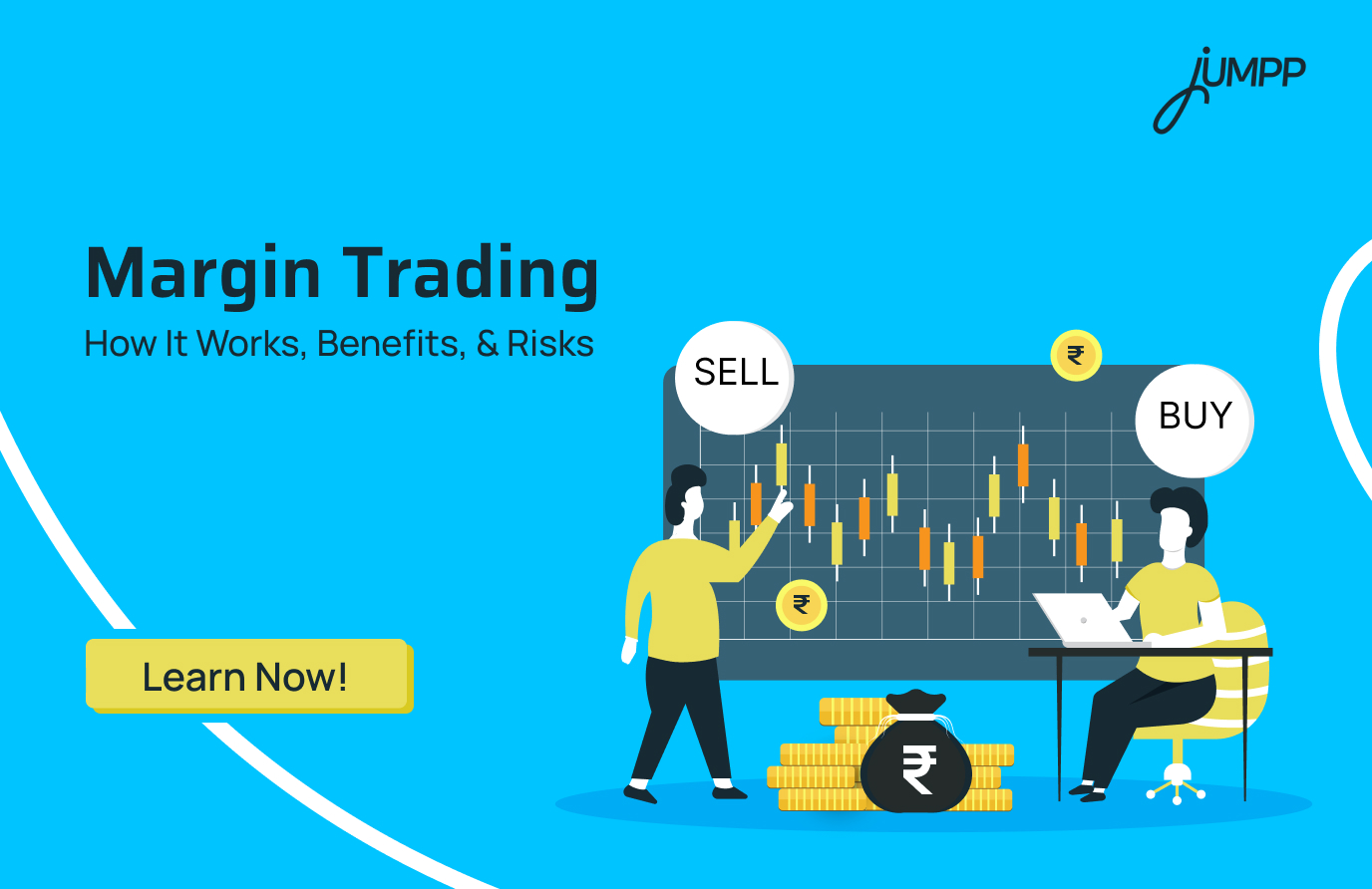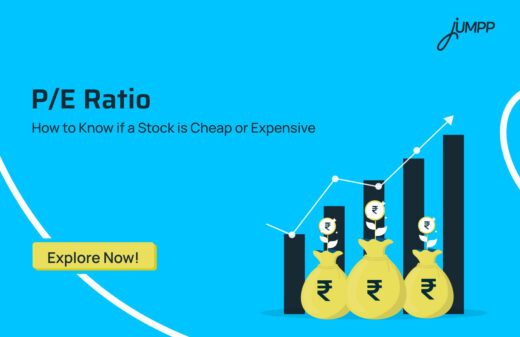What is Margin Trading: Everything You Must Understand Before Using Leverage

Margin trading has become one of the most common facilities offered by modern stockbrokers. However, it is still one of the least understood. Many new investors activate the feature without realising how it works, how much risk it carries, and whether it genuinely suits their investment style. Before you use the margin trading facility (any borrowed funds in the share market), it is important to understand what margin trading means.
What is Margin Trading in Share Market?
Margin trading is the practice of buying or selling shares by borrowing funds from your stockbroker. Instead of paying the full value of your trade-in advance, you contribute a percentage of the total amount, and the broker lends you the remaining amount. This borrowed money allows you to take larger positions than your cash balance would normally allow.
Margin trading gives you the power to control a larger trade value using a smaller initial investment.
What is Margin in Trading?
Margin is the amount of money you must contribute from your own account in order to open a leveraged position. It acts as collateral for the loan you receive from your broker. In every margin trade, there are two kinds of margin requirements.
1. Initial Margin
This is the minimum amount you need to start the trade. It is calculated as a percentage of the total trade value.
2. Maintenance Margin
This is the minimum balance your account must hold after the trade is active. If your balance falls below this level due to market movement, your broker may take action to protect their loan.
Understanding what margin means in trading is essential because the entire concept of leverage is built on this requirement. Margin is not a fee. It is your contribution to the trade.
What is Margin Trading Facility?
The margin trading facility is a service offered by a broker that allows you to borrow money for trading. It is not available automatically. You need to open a dedicated margin account or activate the margin trading facility separately.
The margin trading facility is commonly used in intraday trading and short-term strategies because it provides quick access to additional funds.
What is Margin in Intraday Trading?
Intraday trading involves buying and selling shares within the same trading day. Brokers usually provide higher leverage for intraday trades because the positions are not carried overnight. This means the margin requirement is much lower for intraday trades compared to delivery trades.
What is a Margin Call?
A margin call is a warning issued by your broker when your account balance falls below the required maintenance margin. This usually happens when the market moves against your position.
A margin call means you must either:
- Add more funds,
- add more securities as collateral, or
- Close part of your position to reduce the exposure.
If you fail to act, the broker may automatically square off your position in order to recover the borrowed amount. This is done to protect the broker from potential losses, and it can happen very quickly during volatile market movements.
How Margin Trading Works?
This is how margin trading works-
- You begin by opening a dedicated margin account, because a standard trading account does not permit borrowing.
- You deposit the initial margin, which is a percentage of the total trade value and serves as collateral for the loan.
- The broker lends you the remaining amount. This helps in increasing your buying power and allowing you to take a larger position.
- Interest is charged daily on the borrowed funds, and this cost continues to increase for as long as the position remains open.
- You must maintain the required equity level; falling below it triggers a margin call that demands immediate additional funds or collateral.
- If you close the position, the broker first recovers the borrowed amount and interest, and the remaining balance reflects your profit or loss, which can be larger or smaller than your original contribution.
Ever heard the term colour trading? Explore it here.
How margin trading works- Understand it with an example
Imagine you have ₹30,000 but want to purchase shares worth ₹80,000. With margin trading, you do not need to pay the entire amount. You only pay a percentage as the required margin.
If your broker asks for a 25 percent margin, your contribution will be 25 percent of ₹80,000.
Twenty-five percent of ₹80,000 is ₹20,000, and the broker lends you the remaining ₹60,000, which is added to your buying power. Interest will be charged on this borrowed ₹60,000 for as long as you hold the position.
What are the Advantages of Margin Trading?
Margin trading offers several benefits when used with discipline and a clear strategy.
- Amplified profit potential: Borrowed funds increase your exposure. With this, even small price movements can generate higher percentage returns on your actual capital.
- Increased purchasing power: You can take larger positions with limited cash.
- Ability to short sell: A margin account is required for short selling, enabling you to benefit from falling market prices.
- Better diversification: Existing securities can act as collateral, helping you diversify without liquidating your current holdings.
- Greater trading flexibility: Margin provides quick access to capital, allowing you to act swiftly during short-term opportunities.
- Competitive borrowing costs: Margin loans often carry lower interest rates than personal loans or credit cards, improving potential net returns.
- Potential tax benefits: In some jurisdictions, interest on margin loans may be tax-deductible against investment income.
- Reduced risk of settlement violations: A margin account can prevent cash account restrictions by automatically covering settlement requirements.
What are the Disadvantages of Margin Trading?
Margin trading carries significant risks and demands experience, discipline, and constant monitoring.
- Magnified losses: Losses are calculated on the full trade value. This means you may lose more than your initial margin contribution.
- High interest costs: Daily interest on borrowed funds can erode profits or deepen losses, particularly in longer holding periods.
- Risk of margin calls: Falling below maintenance margin triggers an immediate demand for additional funds or collateral.
- Forced liquidation: If you fail to meet a margin call promptly, the broker may sell your positions without seeking your approval.
- Unsuitable for beginners: The exposure, volatility, and emotional pressure involved in leveraged trading make it risky for inexperienced investors.
Pros and Cons of Margin Trading
| Pros of Margin Trading | Cons of Margin Trading |
| Increased purchasing power | Magnified losses |
| Amplified profit potential | Interest costs on borrowed funds |
| Ability to short sell | Risk of margin calls |
| Opportunity to diversify without selling existing holdings | Possibility of forced liquidation |
| Quick access to funds for timely trades | Requires constant monitoring and experience |
| Competitive interest rates | Not suitable for beginners |
| Helps avoid cash account restrictions | Potential to lose more than the initial investment |
Margin Trading Facility – Understand This Before Borrowing from Your Broker
- Leverage may increase returns, but the same leverage can magnify losses and place you at risk of losing more than your original investment.
- A margin call requires you to add funds or collateral immediately if your equity falls below the required level.
- Failure to meet a margin call can result in forced liquidation, where the broker sells your positions without seeking your consent.
- Interest on borrowed funds accumulates daily, increasing your costs and raising the return you need to achieve in order to remain profitable.
- Brokers follow strict rules and may impose higher margin requirements than the minimum regulations, so it is essential to understand your agreement fully.
- Margin trading demands constant monitoring, knowledge of market conditions, and a high tolerance for risk, making it unsuitable for inexperienced investors.
Final Thoughts
Margin trading is a powerful feature, but it is also a responsibility. Margin can support your trading journey when handled with caution. It rewards awareness, patience, and respect for market conditions. If you treat it as a financial tool rather than a shortcut, it can help you execute well-planned strategies.
Looking for a simple app to start your trading journey? Open a free demat account with the best investment app for beginners!
Margin Trading Facility in India – FAQs
Margin trading is the practice of borrowing money from a broker to buy securities by using your existing funds or holdings as collateral. It increases your exposure in the market.
Margin trading can be profitable when the market moves in your favour because leverage magnifies gains. However, the same leverage can also magnify losses, making it a high-risk approach.
Trading on margin is suitable only for investors who understand market volatility and have strong risk control. It can be harmful for beginners because losses can exceed the initial investment.
The fifty percent margin rule requires an investor to fund at least half of the total trade value with their own capital when buying on margin. The remaining amount can be borrowed from the broker.
The golden rule of margin trading is to protect your capital by never risking more than you can afford to lose and by maintaining sufficient equity at all times. It emphasises disciplined risk management and timely exits.
The best strategy for margin trading is to use leverage in a controlled, disciplined manner by choosing liquid stocks, setting strict stop losses, and keeping position sizes small.






